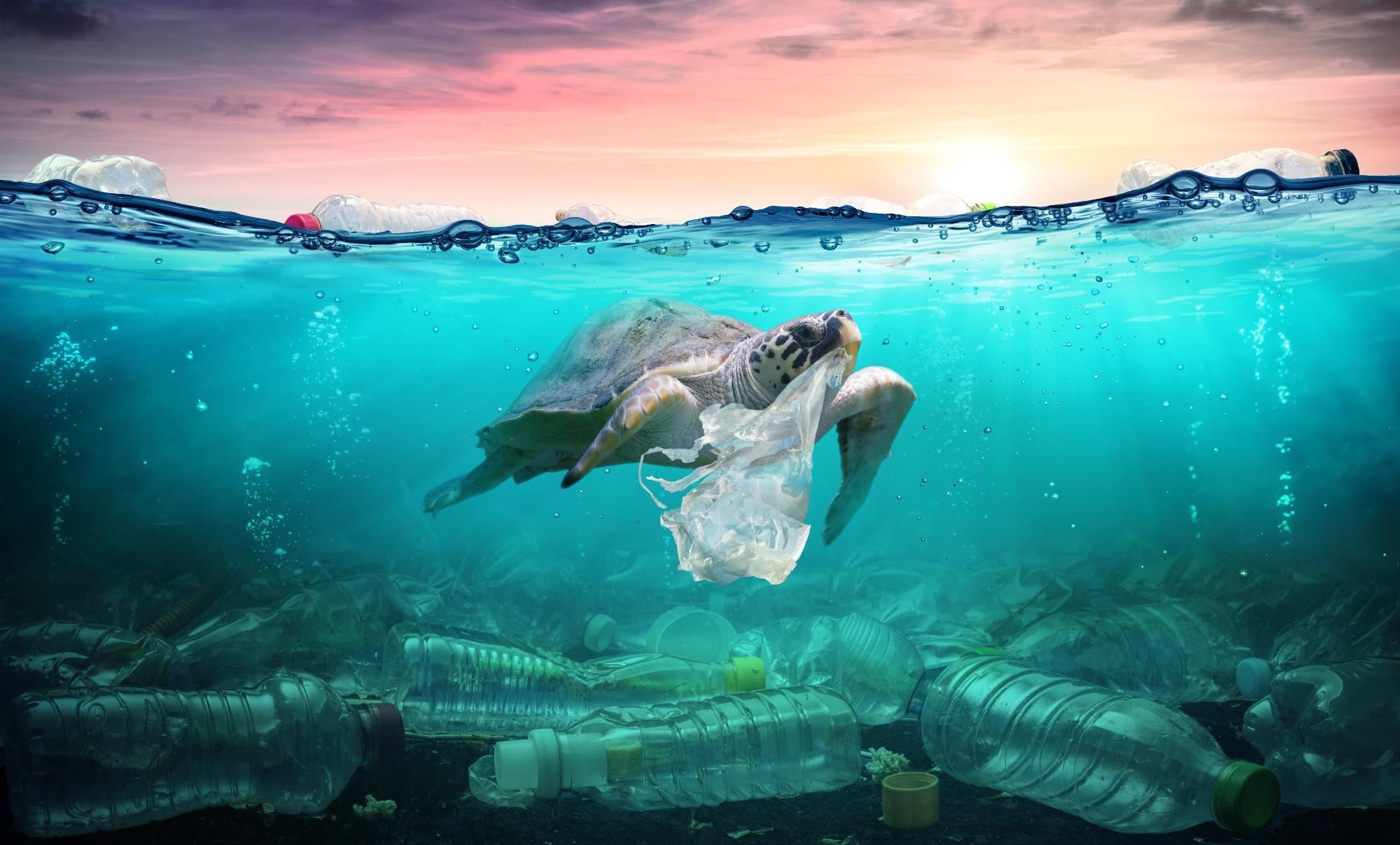A research team has designed a model to monitor the pathways and fate of plastics in the Mediterranean Sea, generated from land-based sources. The research reveals that plastic debris can be seen across the Mediterranean, starting from beaches and surface waters to seafloors.

Image Credit: SHutterstock.com/ Romolo Tavani
The study estimations state that almost 3760 metric tons of plastic debris are afloat in the Mediterranean.
Worldwide plastic production has seen an increase from the 1950s, with 368 million tons of plastic production in 2019. The increased rate of plastic debris is reaching the sea and oceans, and according to estimates, about 250,000 tons of plastic debris are floating across the global ocean waters.
A study published in the journal Frontiers in Marine Science reveals the devastating amount of micro- and macroplastics currently afloat in the Mediterranean Sea.
The Meditteranean Sea is regarded as a hotspot for plastic pollution. The densely populated coastlines, fishing, shipping, tourism and limited surface water outflow to the Atlantic are likely to be the reasons for this pollution. Meanwhile, the Mediterranean is rich in biodiversity, turning it into a region of concern for the conservation of marine ecosystems.
Plastic pollution is a nuisance to all levels of marine biodiversity, starting from micro- and macroplastics found at beaches, sea floors, sea surfaces and within the bodies of various marine animals. Reports even state that humans end up having plastics through seafood consumption.
Modeling Plastic Pollution
Researchers from the Hellenic Centre for Marine Research, Greece, have developed a new model to track the pathways and the end of the plastic debris in the Mediterranean Sea. The model executed a simulation from 2010 to 2017, monitoring plastics from land-based sources like rivers and coastal cities. It also tracked key disruption processes such as sinking, vertical/horizontal mixing, currents and winds.
The model also traced down potential accumulation patterns of micro- and macroplastics in the surface layer, seafloor, water column and on beaches.
The study presented that out of the 17,600 tons of plastic load, about 3760 tons of debris reach the Mediterranean and are currently afloat. Out of the total plastic debris, 84% ends up on beaches and the remaining 16% reaches the water column of the seafloor.
Simulations of plastic distribution in marine environments are currently characterized by a large degree of uncertainty. Experimental data on several processes that affect the fate of plastics, such as sinking, ingestion by marine organisms and fragmentation into smaller pieces are still quite limited.
Dr. Kostas Tsiaras, Study Lead Author, Hellenic Centre for Marine Research
“Our model showed a reasonable skill in reproducing the observed distributions of plastics in the marine environment and thus can be used to assess the current status of plastic pollution in the Mediterranean and evaluate the impact of future cleaning actions and management plans,” added Tsiaras.
Biofouling was proposed as a potential mechanism, by the model, for the removal of microplastics from the seawater surface. The phenomenon occurs when micro-organisms like algae accumulate on floating and submerged items, which include plastic debris.
Plastics are Taking Over the Oceans
Microplastics are less abundant in the sea surface due to their faster sinking from the attachment of heavier marine organisms (biofouling) and accumulate deeper in the water column and seafloor. On the other hand, macroplastics, such as plastic bags and styrofoam may float around for longer time periods, and travel long distances from their sources.
Dr. Kostas Tsiaras, Study Lead Author, Hellenic Centre for Marine Research
The sources of microplastics, like wastewater treatment plants, were primarily located near metropolitan and highly inhabited areas along the Spanish, French and Italian coasts. Larger-sized microplastics were traced in regions with high untreated wastewater, such as the coasts of Turkey and Greece.
A huge volume of microplastics was found in key riverine inputs like Algerian, Albanian and Turkish coasts, and close to metropolitan cities and highly populated coasts of Spain, France and Italy.
Policy Recommendations
The model outputs can be used to identify ecologically (bird and cetacean habitats) or commercially (aquaculture and fisheries) important areas that are potentially threatened by plastic pollution. This is important for the design of ecosystem-based management plans and policies for the mitigation of plastic pollution, which is often a trans-boundary environmental problem, as floating plastics may travel long distances from their sources.
Dr. Kostas Tsiaras, Study Lead Author, Hellenic Centre for Marine Research
The variation in social, political, and cultural aspects of the coastline countries of the Mediterranean pose a challenge in the implementation of a common marine ecosystem management policy. However, the model can be used to overcome these problems.
Tsiaras concluded, “The use of predictive models, like the one presented here, that can connect observed plastic concentrations with their sources, is critical for the designation of successful management plans.”
Journal Reference:
Tsiaras, K., et al. (2021) Modeling the Pathways and Accumulation Patterns of Micro- and Macro-Plastics in the Mediterranean. Frontiers in Marine Science. doi.org/10.3389/fmars.2021.743117.